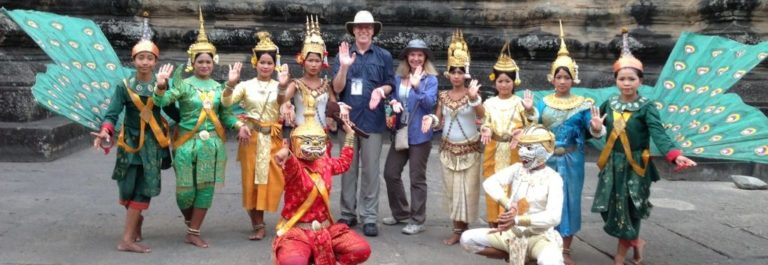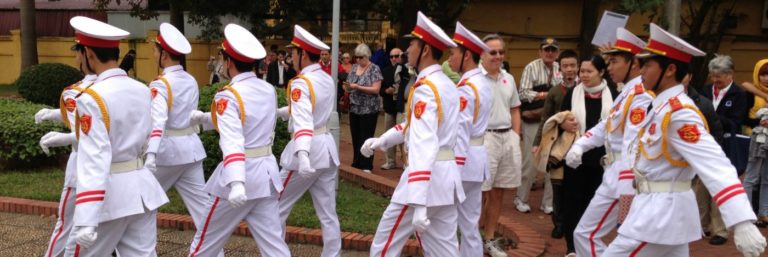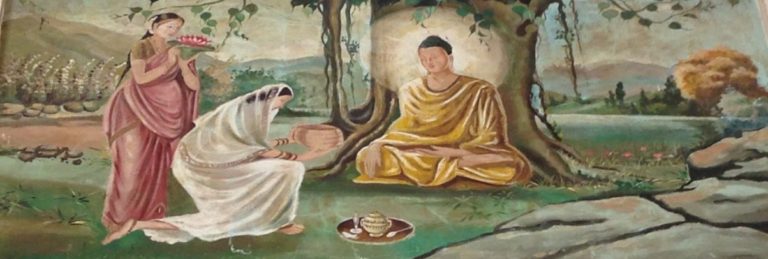Northern Vietnam, along the Hong (Red) River, cultivated rice and organized into the Hong Bang Dynasty as early as 1200 BCE. Over time, there was a short succession of dynasties and by 111 BCE, the valley was ruled by the Han Chinese and remained under Chinese domination for almost a thousand years. While the Hong Vietnamese may not have liked being a vassal state to the Chinese emperors, it did give them the opportunity to develop into one of the strongest nations in Southeast Asia.

The mountains seem to have limited the Chinese influence in the Mekong Valley (Cambodia/Laos/South Vietnam). Here, around the 1st century CE, the Funan Empire arose, followed by the Chenla, around 550 CE. These two smaller empires were centered in the Mekong Valley and adjoining coastlines.
By the 7th Century CE, a large Hindu empire, stretching from the base of the Malay Peninsula to Sumatra and Java, was established, called the Srivijaya Empire. Much of its history has vanished, even though it lasted into the 13th Century CE. It was ultimately vanquished by the even larger Majapahit Empire that rose across much of Indonesia and Malaysia, roughly 1290-1525.
The Srivijaya Empire had an important legacy for the Mekong communities. A leader from Java, named Jayavarman II, arrived in the Mekong valley, unified the Mekong groups into the Khmer Kingdom, and declared himself to be Universal Monarch. This set the foundation for the Khmer Empire.
By about 800 CE, the Khmer empire, with its capital at Angkor in the central Mekong valley, became the first dominant empire of mainland Southeast Asia. At its most extensive, it covered an area that is now Thailand, Cambodia, Laos, and southern Vietnam. (The word, “Khmer,” is not easy to pronounce. It is one syllable and there is no “r” on the end. Sort of like “Khmae.”)
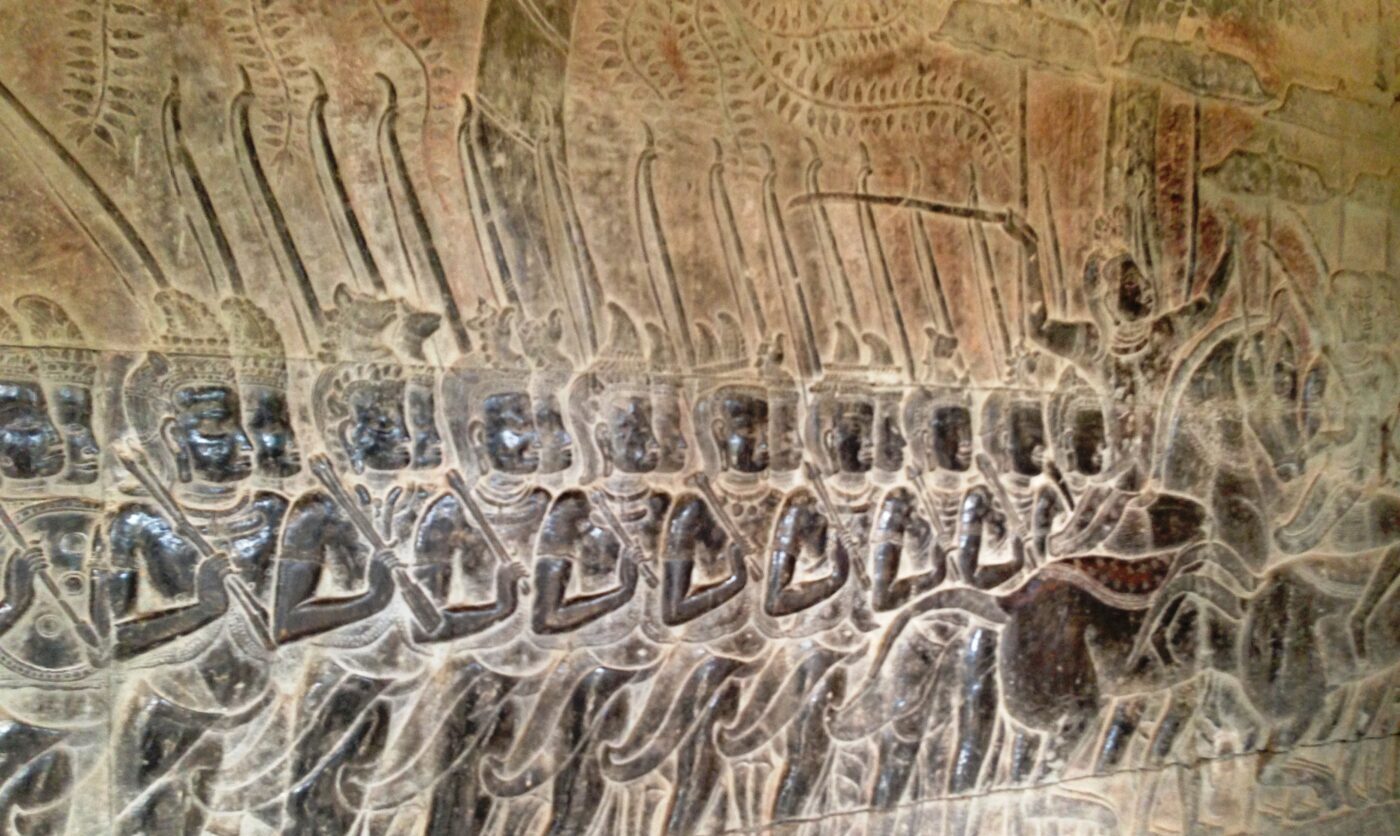
The stunning achievement of the Khmer Empire was the massive city of Angkor. Located north of the Tonle Sap, (“Great Lake”), in central Cambodia, the city is estimated to have covered almost 400 square miles, ten times larger than any other pre-industrial city in the world. Its population may have reached a million people. The archeological site is one of the premier attractions in the world. In total, it really comprises about three or four cities developed over time by Khmer rulers. For a concise history, pick up Angkor & the Khmer Civilization, and The Khmer Empire: The History and Legacy of One of Southeast Asia’s Most Influential Empires
. For an introduction to local folklore, see Khmer Legends
.
Its signature temple, Angkor Wat, was completed by 1150 CE, by King Suryavarman II and was originally dedicated to the Hindu god Vishnu. Its five towers represent the five peaks of Mount Meru, the spiritual home of the Hindu gods. The steps and walls are carved with other divine themes and, of course, the life and victories of the king. Over time, the state religion alternated between Hinduism and Buddhism. The temple site is maintained by Buddhist monks today. For an in-depth interpretation of the extensive bas-relief carvings, spring for Of Gods, Kings and Men: The Reliefs of Angkor Wat.
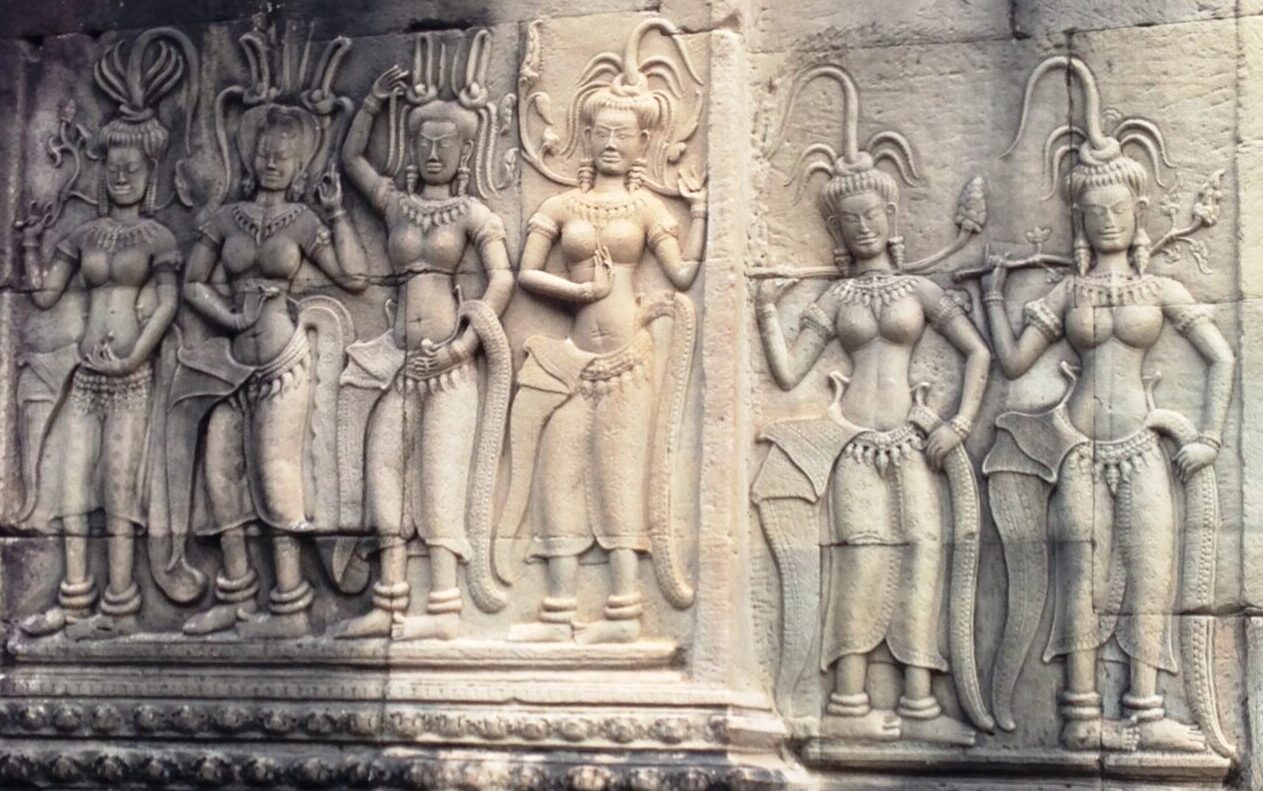
Angkor Wat has been described as the “world’s largest religious structure.” It is one of many significant temples and structures spanning several square miles. For a recently updated guide to the Angkor temples, see Cambodia: Guide to the Temples of Angkor (2019 Travel Guide with Angkor Wat, Angkor Thom and more), and Angkor Wat: The History and Legacy of the World?s Largest Hindu Temple
. The original definitive archeological description of the entire Angkor complex was written in 1944 by French archeologist, Maurice Glaize. It is available free on the Internet, with updated notations, at www.theangkorguide.com.
By the 1300’s, the Khmer Empire started to weaken. One of its princes, Fa Ngum, decided to leave the court in Angkor and to stake his own claim in the upper reaches of the Mekong River, in what is now northern Laos. His Lan Xang dynasty took hold in Vientiane on the shores of the river. The strong connection between the Khmer people of Laos and Cambodia has persisted through the times of empires, colonialism and communism.

At about the same time, the mid-1300’s, Hindu kings in the Chao Phraya River valley (Siam or Thailand), established a city north of present-day Bangkok, called Ayutthaya. (On the back beat: “a-YUT-tea-Ya.”) They rebelled from the Khmer, pushing them back to their own valley.
Northern and Central Vietnam continued to be separate, thanks to mountains. By 1471, the Mac Dynasty in Northern Vietnam had conquered the Champa Dynasty in Central Vietnam and extended down the coast. For the time, the Khmer kept them out of the Mekong valley. Meanwhile, back in the Irrawaddy valley, (Myanmar), the eager little king of Taungoo in northern Burma, Tabinshwehti, unified the valley by conquering his much stronger southern rivals. His successor, Bayinnaung, not to be outdone, swept across Southeast Asia, and, by 1580, established the largest empire that would ever exist in the region, covering Myanmar, Thailand, and Laos.
It proved to be a flash in the pan. The Siamese in Ayutthaya beat the Taungoo back to their own valley and then subdued the Khmer. Vietnam still managed to stay separate and, in the midst of its own civil war, began to creep into the lower Mekong valley.
The next couple of hundred years were pretty tumultuous.
- The Burmese Konbaung overran Ayutthaya, (1765-67), completely destroying the city.
- Luckily for the Ayutthaya kingdom, the Chinese invaded Burma, completely distracting the Konbaung who were forced to retreat to defend their home turf, (1767).
- A smaller Ayutthaya empire survived in the Chao Phraya valley as Siam, retreating from Khmer.
- Civil war in Vietnam, 1771-1802, resulted in a united Vietnam, from the Hong valley in the north to the Mekong valley in the south.
- The Khmer and Laos were bounced back and forth like ping pong balls, mostly between Siam and Vietnam, leading to war between the two larger powers, 1831-34.


